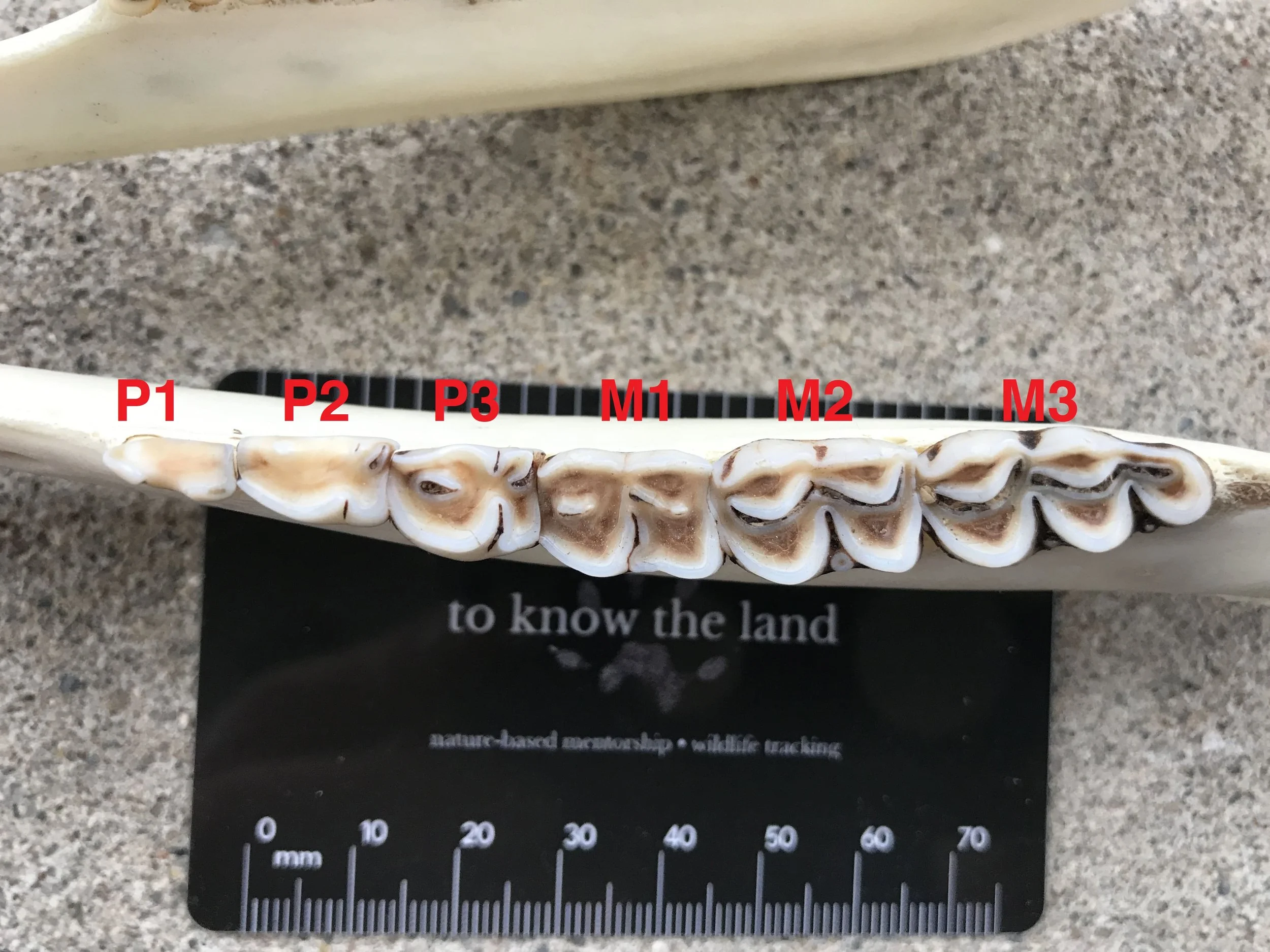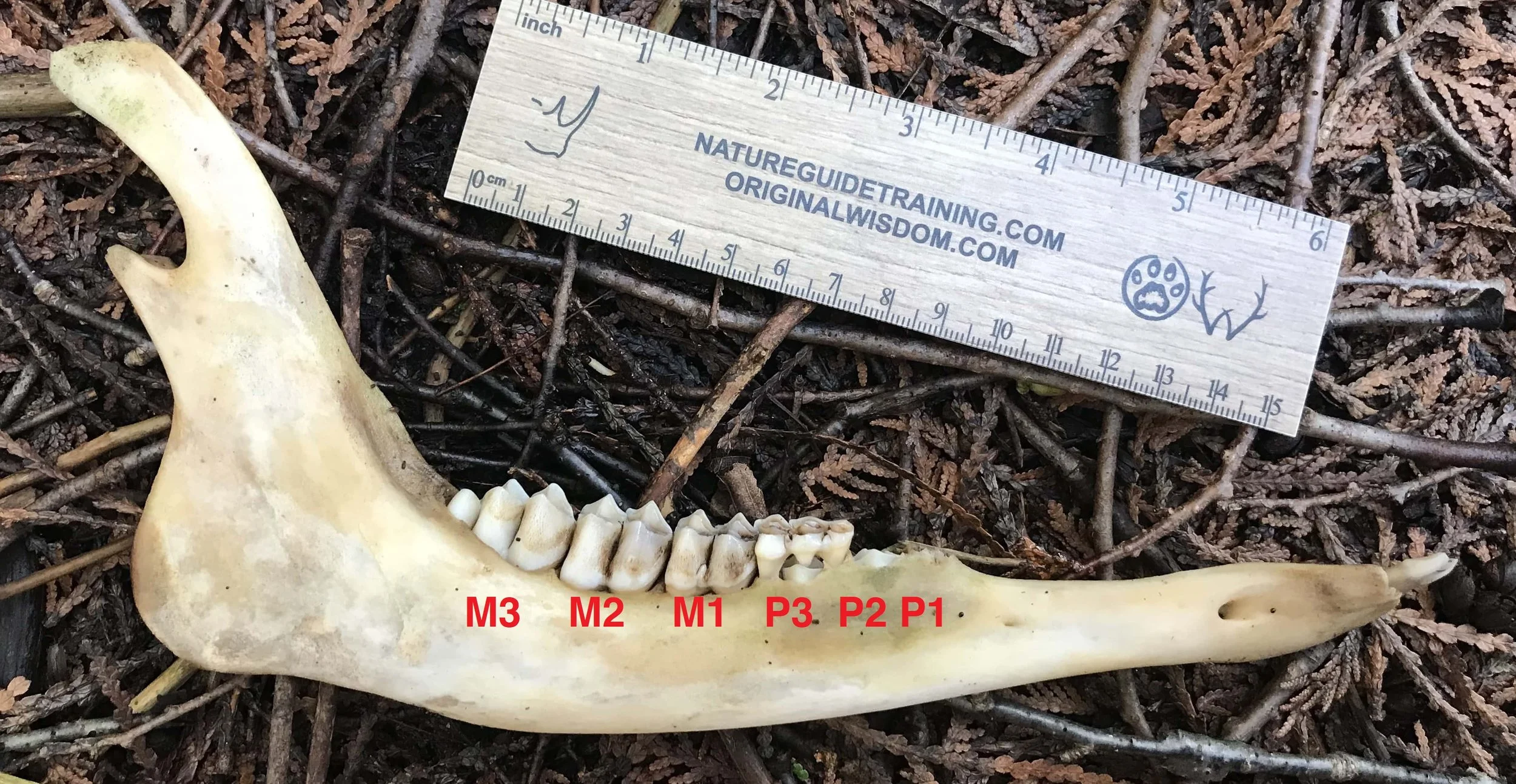How To Age A White-tailed Deer by Looking At The Teeth, pt. 1 : Younger Deer
This is part 1 of 2 of posts relating to aging White-tailed Deer by looking at the teeth in lower mandibles. If you would like to learn about tooth wear in older deer, check out part 2 here.
A lot has been studied and written about on the topic of White-tailed Deer (Odocoileus virginianus). But despite reading a ton of it, I still find it trying to find all the various pieces of information and have it all make sense… unless I write it up myself. So, here is my attempt to consolidate and better understand how we can know a deer’s age at the time of their death by looking at the teeth which remain.
Let’s start with an adult White-tailed Deer. A mature White-tail has 32 teeth. A dental formula is a way of quickly explaining which teeth the animals has, and how many. When writing out the dental formula, I stands for incisors, C are canines, P are premolars, M are molars. The first number in a set is always the teeth in the cranium (top of the mouth), followed by teeth in the mandible (teeth in the jawbone). Also, the number given is for only one side of the animals mouth. That means that you must double the number to get the total amount. The dental formula for a mature White-tailed Deer is as follows : I 0/3 C 0/1 P 3/3 M 3/3 = 32. To age a White-tail we are going to be looking at the mandibles, the lower teeth, to give us an idea on the age of the animal.
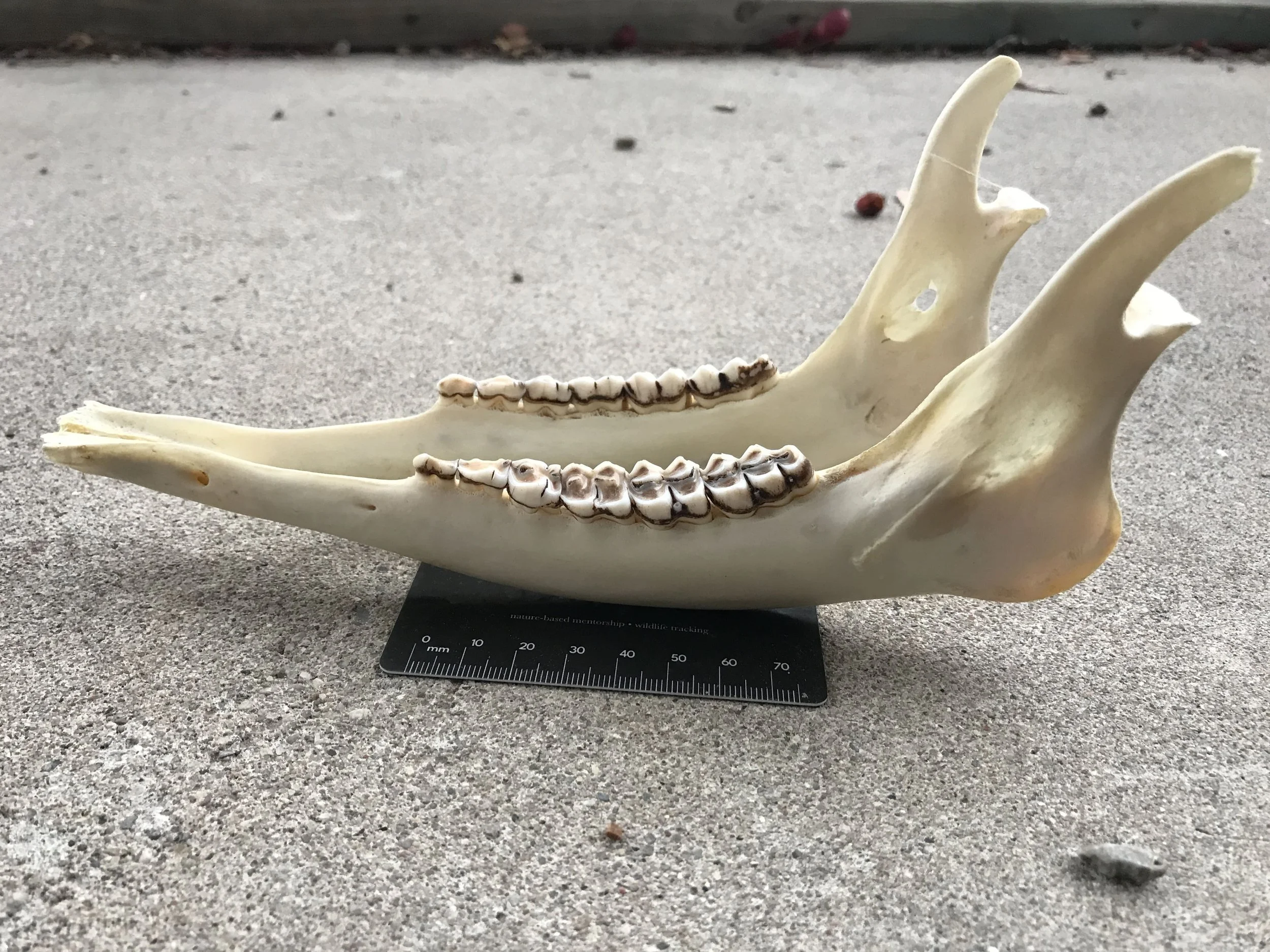
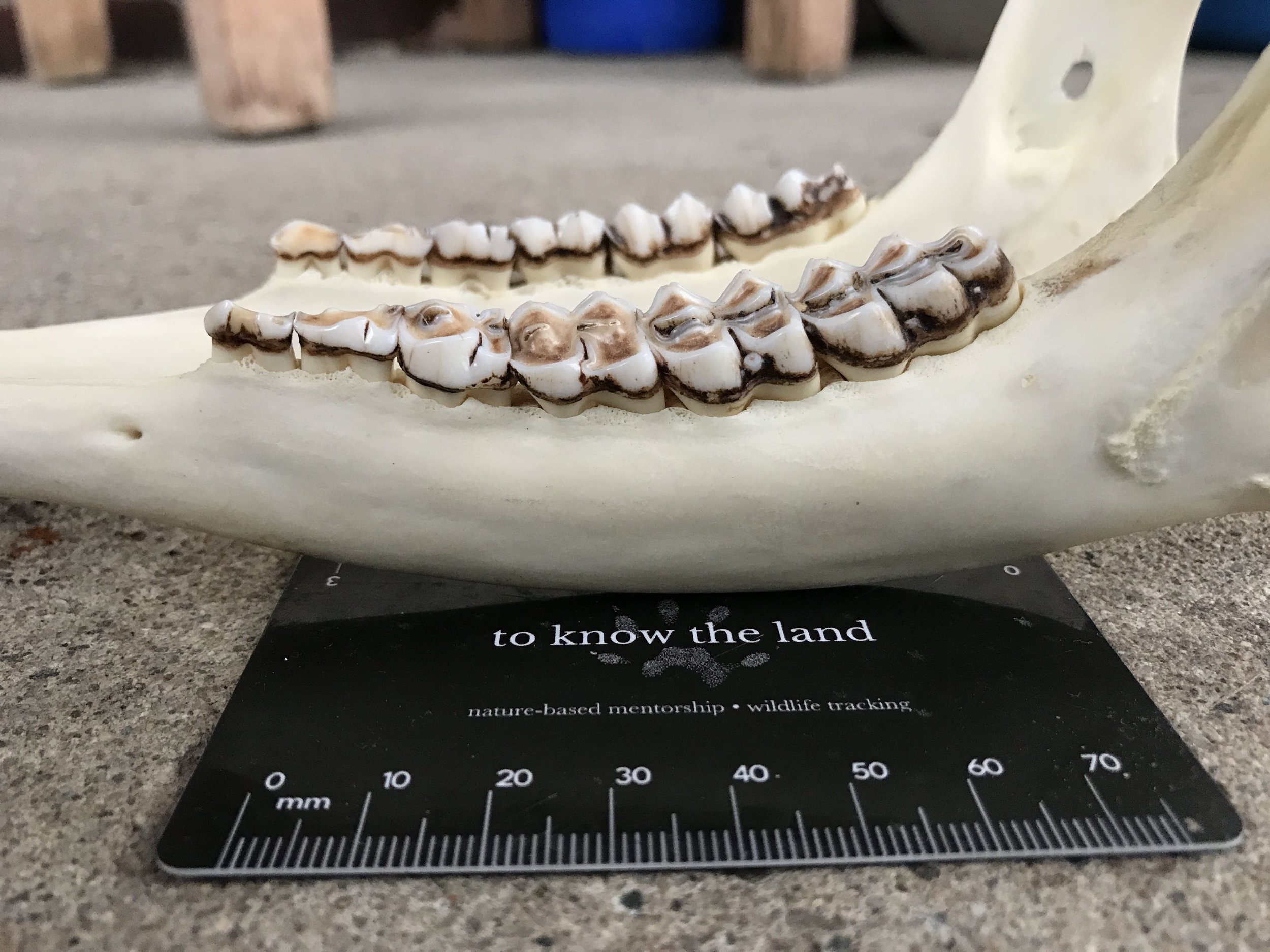
Tooth Replacement
Just as in humans, White-tails have successional teeth, meaning that they are born with one set of teeth, known as milk teeth or deciduous teeth. These deciduous teeth eventually fall out and are replaced by adult teeth. We can look to different characteristics of these early deciduous teeth to tell three different age classes; those of fawns, those of deer who are one and a half years old, those two and half years and older.
Let’s look at a young deer’s mandible.
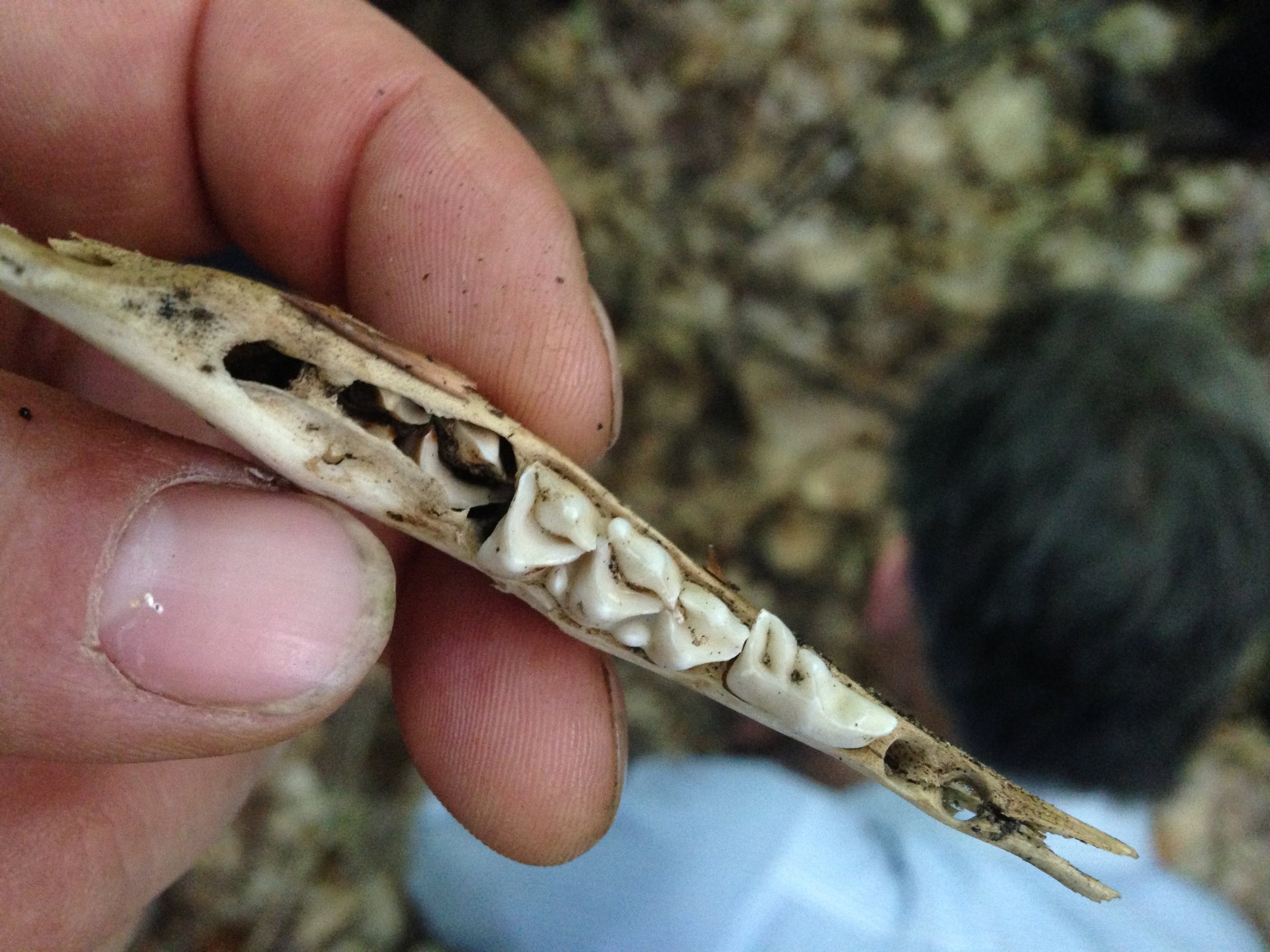
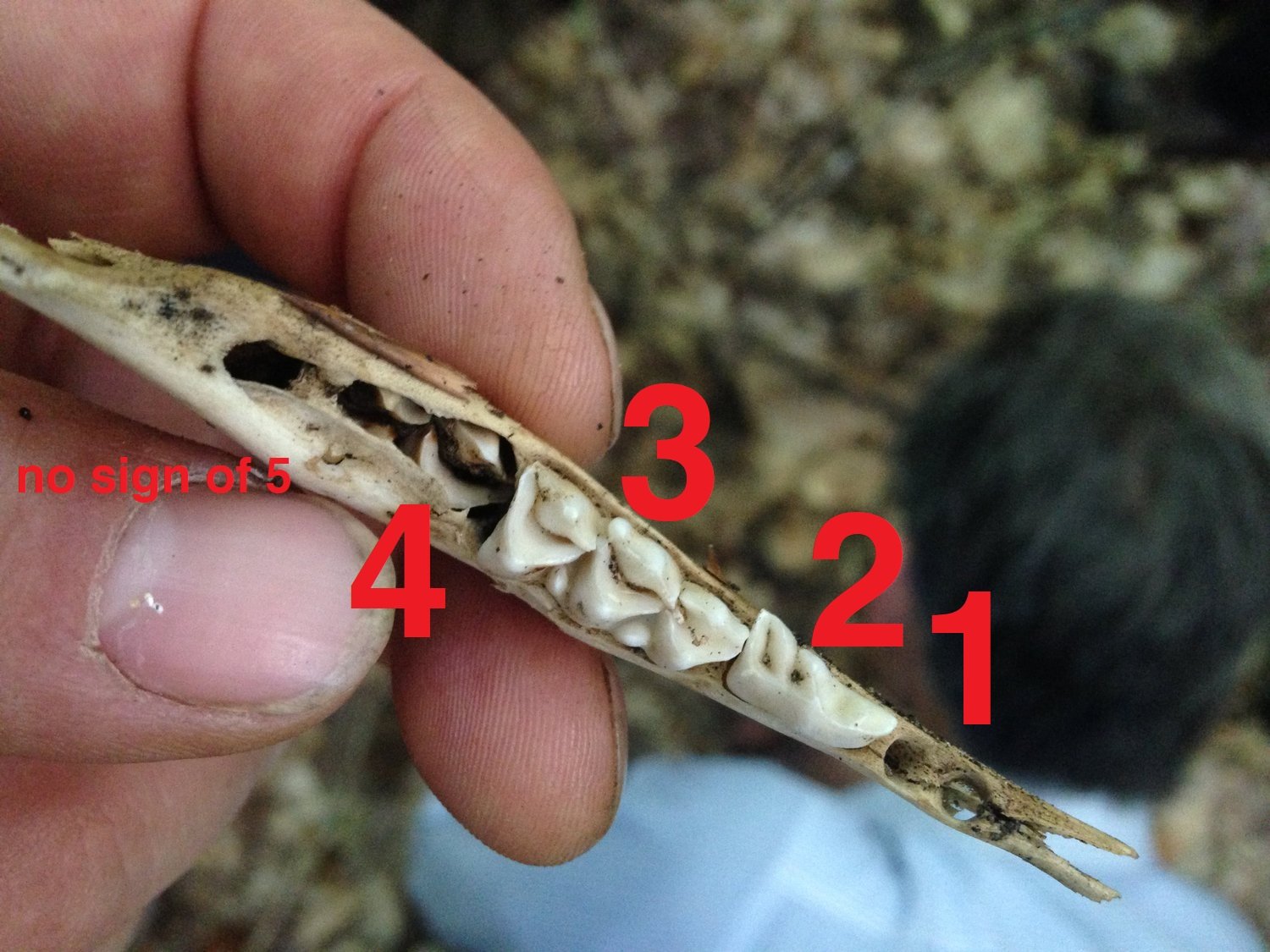
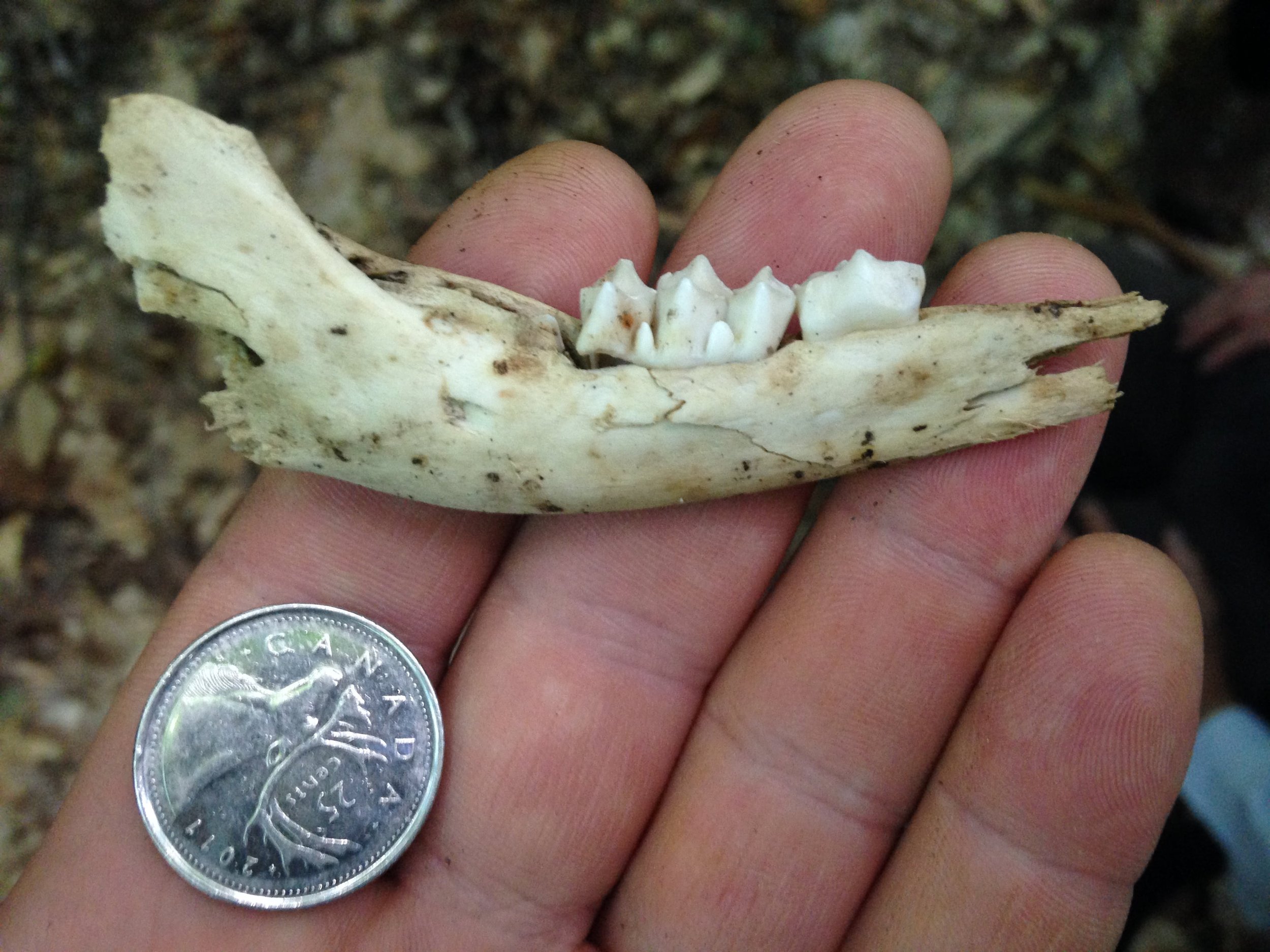
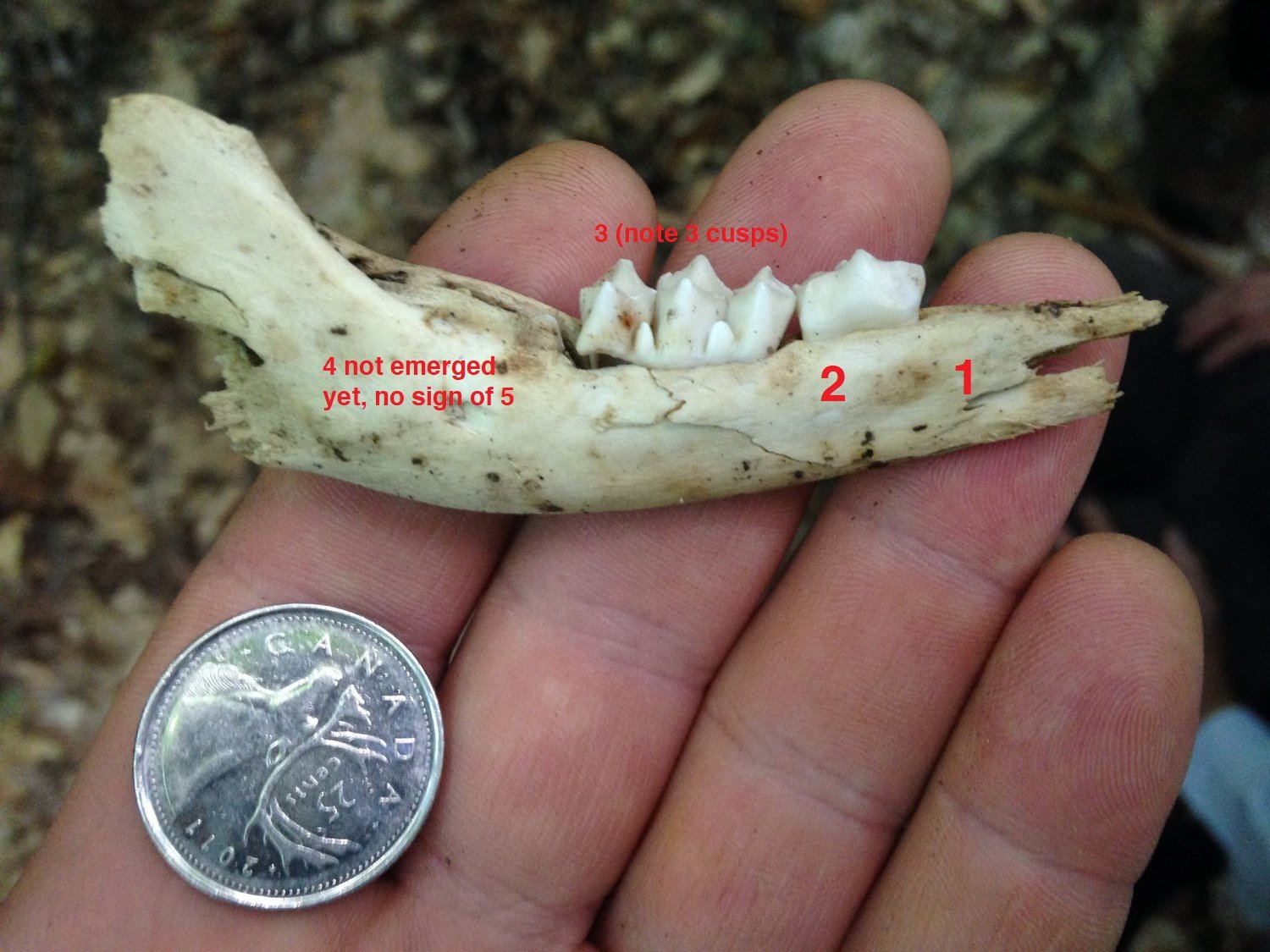
Fawns
Fawns have three or four cheek teeth when they are born. The third premolar, called P3, has three cusps or spikey points. You can see this clearly in the second image. If a fourth tooth is present, it is the first molar, M1. In the images above, the molar has not erupted yet. A fifth tooth, M2, will emerge within six months of birth, and a sixth tooth, another molar, M3, will emerge before reaching 1.5 years old. If you come across a White-tailed mandible with less than six teeth, it was from a fawn.
1.5 Years Old to 2.5 Years Old
A White-tailed Deer who is 1.5 years or 16 months old will have 6 teeth on each mandible, three premolars and three molars. The third premolar, P3, be a tricuspid milk tooth still sticking around from when the deer was younger and will likely be pretty worn down. This tooth will be replaced with a permanent bicuspid premolar before the deer is 2.5 years or 30 months old. Additionally, M3, the third molar with three cusps, will have erupted, though the third cusp maynot have yet fully emerged from the gum line, but will have fully emerged by 2.5 years old.
Lateral view of the left mandible.
To help explain this point, I am going to throw in that first image in again here. See how all of the teeth have a band of brown along the sides? This is the gum line. Anything below this brown line was below the gums, and anything above was above the gum line. Now, see M3 at the back? Note how it’s got all three cusps above the gum line. If this deer was 1.5 years old or younger, that third cusp, the one closest to the back of the jaw, would still be under the gum line. Since the tooth has fully erupted, this means the mandible in the image is from a deer who is 2.5 years old or older.
2.5 Years Old and Older
This is where I do not have all the resources I would want to continue. I will try and explain it, but without corresponding images I believe it would be a frustrating task both to try and describe, and for a reader to learn… but here goes.
If a White-tail is older than 2.5 years then we have to start looking at tooth wear rather than tooth replacement, as they will now have all of their permanent adult teeth. We look specifically at the cusps on the lingual side (the inner side, or the side of the tongue, as opposed to the cheek, or buccal side) of the mandibles.
The external layer of teeth is enamel. However strong the enamel is, eventually it will wear away, revealing a brown inner layer of dentin. Depending on the width of this exposed inner brown layer we can get a read on how old the deer may be. This can be a lot trickier than the tooth replacement because it depends on what the deer has been eating throughout their life. Has it been mostly herbaceous forage like Red Clover (Trifolium pratense), North American Dandelion (Taraxacum officinale subsp. ceratophorum), and Goldenrods (Solidago spp.), or is tougher browse like Eastern White Cedar (Thuja occidentalis), Red Osier Dogwood (Cornus sericea), and acorns? Different diets wear the teeth in different ways, just like in humans.
Look at the lingual crests (again, located on the tongue side of the tooth) of tooth 4, or M1. Note if you can see a slender, dark strip of exposed dentine. As the crests gradually wear down over time, the dark dentin strip will eventually match or be wider the width of the surrounding enamel. You can see this in the image below.
Superior (top down, or birds-eye) view of the left mandible.
However, when examining tooth M1 at the age of 2½, this dark brown dentin strip on the lingual side (the top of the photo) will still be narrower than the enamel. If the strip is equal or exceeds the enamel width, then it likely means the deer is older than 2½. You can then move on to M2 (tooth 5) and ask the same question: Is the dentin strip narrower or wider? If the answer is “wider” for both tooth M1 and M2, then congrats! You are holding the mandible of a deer, likely 3.5, otherwise known as a “mature” adult deer.
On the mandible pictured above, I would say that the dentin on M2 is not wider than the enamel. This would imply that the mandible comes from a deer who just had reached the age of about 3.5 years old. Why do I guess 3.5? I found this deer, newly deceased after trailing multiple Coyotes (Canis latrans) throughout a county forest in mid-November. The carcass was still bloody, the skull still had a pelt cap, and we could track the blood trail as the Coyotes dragged the deer through the snow. They must have died within the previous couple of days.
In my region of Southern Ontario, White-tailed Deer breed around end of October - mid-December. The does then give birth after an average 200 day gestation period. Let’s imaging a doe mated on October 31st, 2015, and then 200 days later, proceeded to give birth on May 19th, 2016. In three years and six months later, it would be approximately November 17, 2019, the day I came across this dead deer.
Remember, tooth wear isn’t the most exact science but we can refine our guesses and extrapolate from the information we have to get to a better answer.
Just for the fun of it, let’s try another. I found this mandible along with the pair on August 15th, 2023 on the edge of Guelph along the Smith Loop Trail. Some interesting things pop out for me right away.
Bone and teeth of the lower right jaw from a White-tailed Deer.
I first see that P3 has 3 cusps and it is in the process of being replaced by another tooth below. This new tooth would be the bicuspid permanent premolar that will stick around for the rest of this deer’s adult life. I also notice that P2 and P1 are in the process of being replaced. If I look to the back of the mandible I can see that back end of M3 isn’t above the gum line. Using this clue, along with the ongoing replacement of P1, P2, and P3, I would age this deer around 1.5 years old.
A close up of the deciduous P3 with three cusps being replaced by the bicuspid adult tooth seen pushing through.
In summary;
Less than 6 teeth means the mandible belonged to a fawn.
If premolar 3 (the third tooth from the front of the jaw) still has three cusps, the deer is 1.5 years old.
If premolar 3 has two cusps, then the deer is at least 2.5 years of age.
Aging White-tailed Deer mandibles is a pretty cool practice, and something I would really like to keep up with. I would love to be able to look at a mandible in the field and be able to read the signs to be able to determine the animal’s age at the time of their death. It would add a whole other layer to the bones which are left behind. Now though, I wonder if it is possible to figure out a system of aging in the field with other animals, too?
To Learn More :
How To Age A White-tailed Deer by Looking At The Teeth pt. 2 : Older Deer
Jawbone Talk - Amazing pdf resource by QDMA I will likely print out for myself (pdf)
White-tailed Deer Jawbone Aging: Part 1 -- Tooth Replacement
Human and Non-human Bone Identification by Diane L. France (CRC Press, 2009)
The Deer of North America by Leonard Lee Rue (The Lyons Press, 1997)
Animal Skulls by Mark Elbroch (Stackpole Books, 2006)
A Key for Aging White-tailed Deer Using the Tooth Replacement and Wear Technique
Aging a Deer by Examining Its Jawbone


